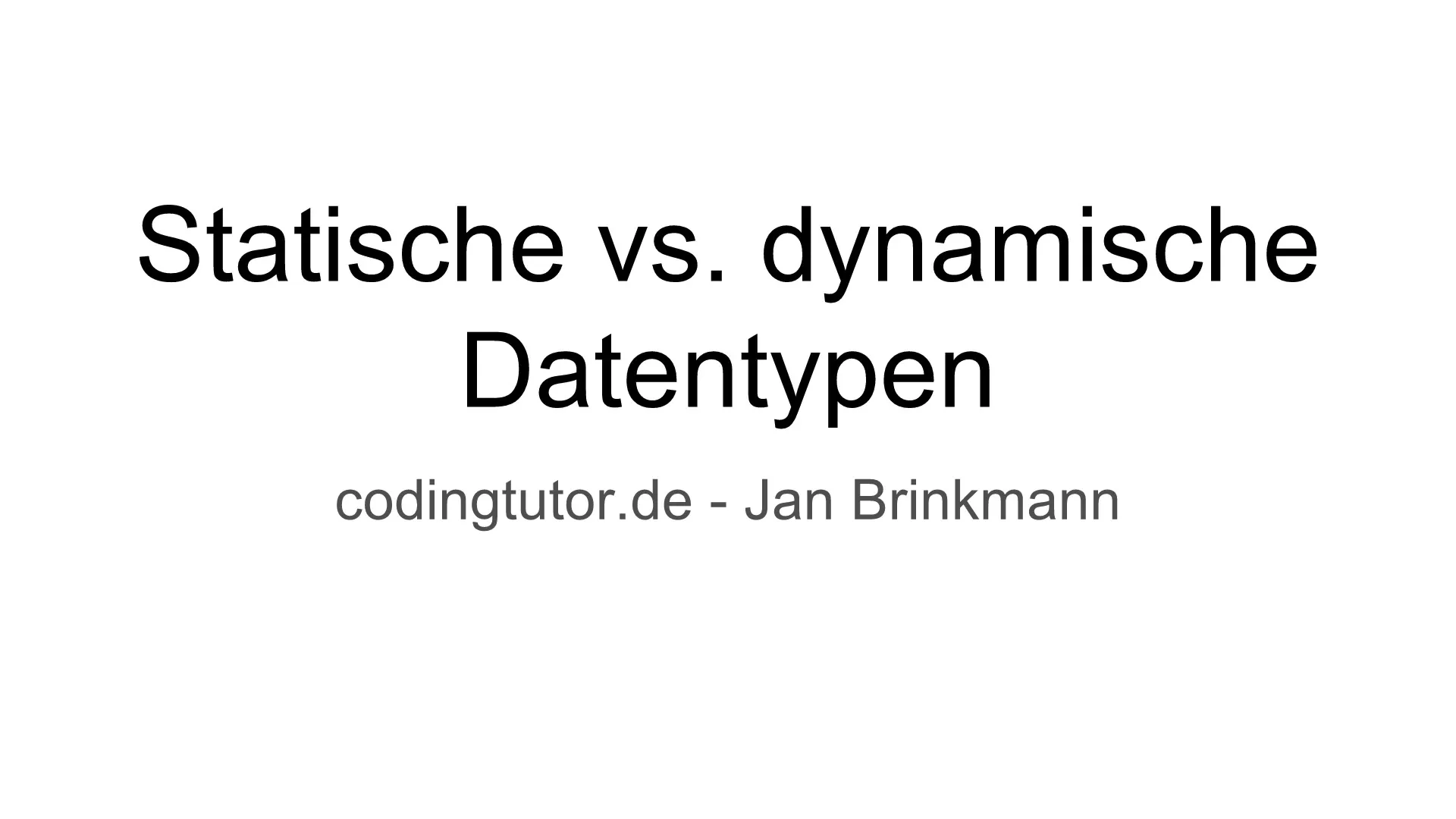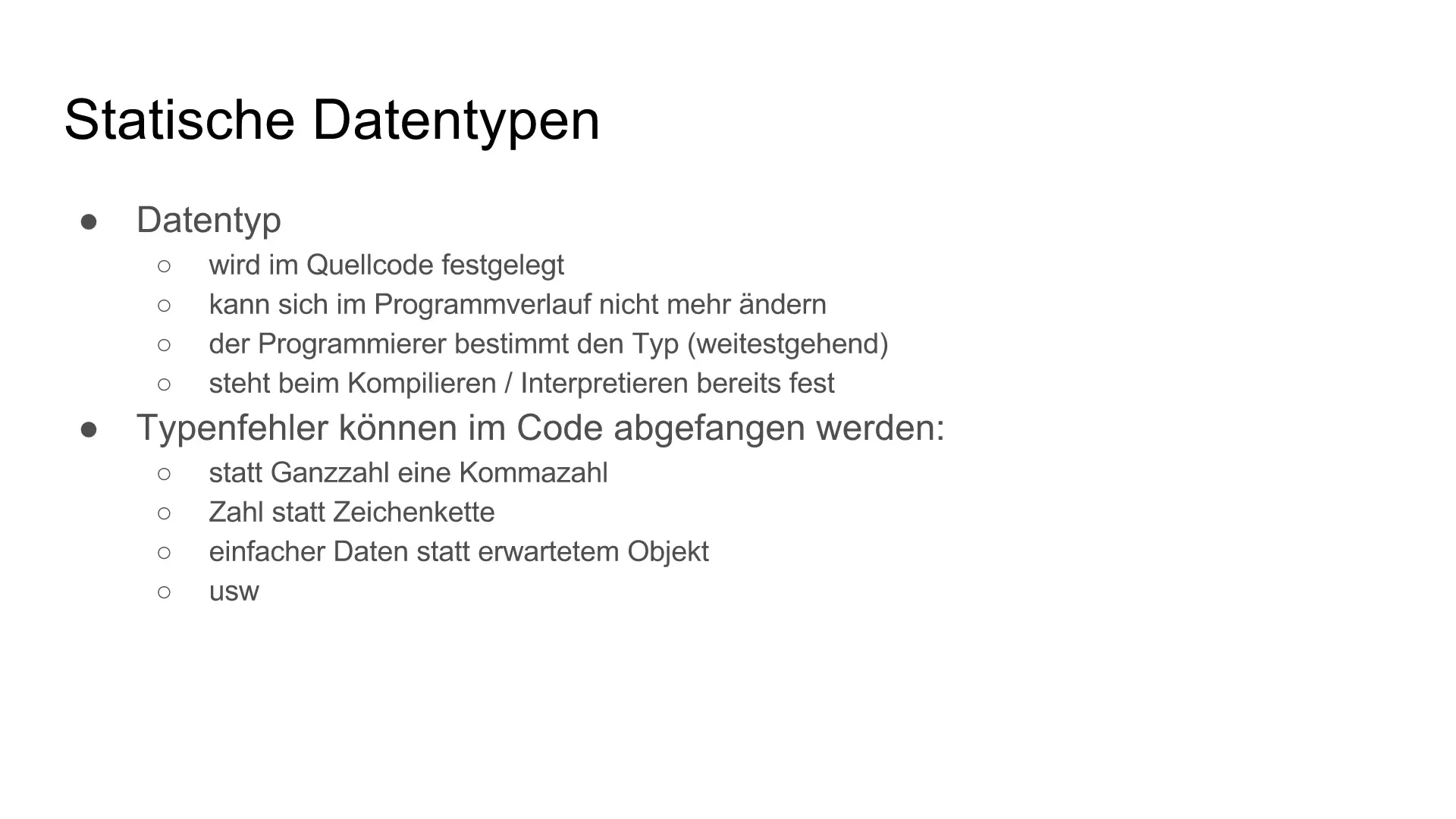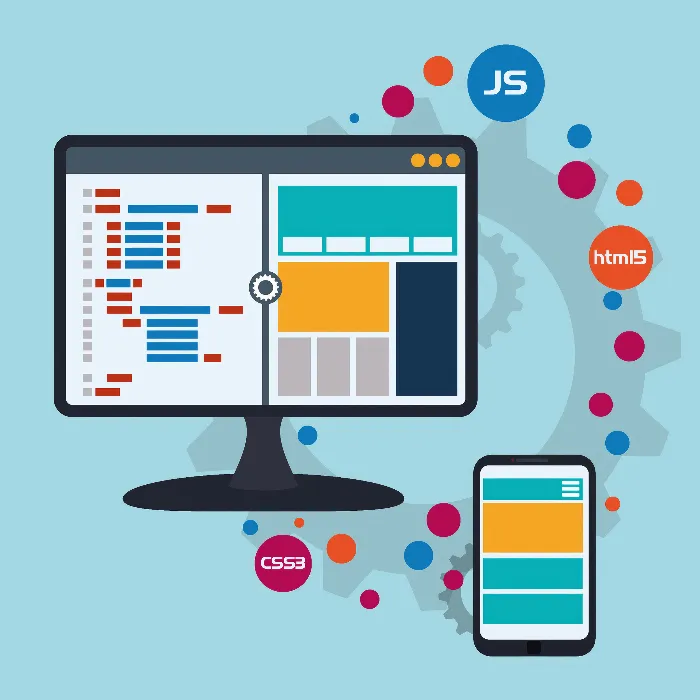Programming can often be confusing, especially when it comes to data types. Understanding static and dynamic data types is essential for anyone looking to get serious about programming. Whether you're just starting with a language like Java, C++, or JavaScript, this knowledge will help you become a better programmer.
Key Insights
- Static data types must be defined at compile time, preventing errors in advance.
- Dynamic data types allow for more flexible programming, but carry the risk of runtime errors.
- The use of automated tests can help identify errors in dynamically typed languages.
- The choice between static and dynamic largely depends on the intended use of the software.
Step-by-step Guide
1. Understanding Static Data Types
In static typing, the data type of a variable is determined at compile time. This means you have to specify exactly what type the variable is in the code. For example, you could declare a variable x as an integer. Once set, the data type remains unchanged.

This has the advantage of early error detection. During the translation of the source code, the compiler checks whether the correct data type is being used. This means that example values not matching the expected type are immediately flagged as errors.

2. Advantages and Disadvantages of Static Data Types
The main advantage of static typing lies in the safety: you can be sure that variable values will always have the expected type. This helps to avoid transient runtime errors. However, development in statically typed languages is often slower and less flexible, as you have to define the data type for each variable.
Static languages like Java, C, or C++ require constant checking of types, which can make programming tedious. However, there are some exceptions, such as Swift, which supports type inference, meaning it can sometimes automatically recognize the type and spare you the need to specify it explicitly.
3. Exploring Dynamic Data Types
Dynamically typed languages like JavaScript or Python allow you to define the data type only at runtime. This means you can not only assign a type to a variable but also change it at any time during program execution.
This brings a certain flexibility but can also lead to difficult runtime errors. For example, a variable initially declared as a string could later be converted into an integer. Errors that are detected early with static typing only appear here at runtime.
4. Advantages and Disadvantages of Dynamic Data Types
Dynamic typing often makes programming easier and faster, especially for smaller projects. You have to think less about the specific data type. However, this can lead to messy code and hard-to-find bugs, especially in larger projects. Games and graphics-intensive applications are generally not suited for this type of programming.
Another advantage of dynamic typing is the possibility of using automated tests to verify your program's functionality. This significantly eases error management.
5. Using Automated Tests
In dynamically typed languages, it is advisable to conduct automated tests to ensure your code functions correctly under various conditions. Tests help you discover bugs that may not be immediately visible.
Creating a testing framework can help ensure that your program runs stably in real-world applications. The relatively greater flexibility of dynamic data types makes automated tests almost indispensable.
Summary – Static vs. Dynamic Data Types: A Beginner's Guide
The difference between static and dynamic data types is of great importance for anyone wanting to learn programming. Statically typed languages offer more safety and predictability, while dynamically typed languages offer more flexibility and speed in development. By understanding the advantages and disadvantages of both approaches, you can make informed decisions about which programming methods you want to use in your projects.
Frequently Asked Questions
What are static data types?Static data types must be defined at compile time and provide greater safety.
What are dynamic data types?Dynamic data types can be changed at runtime, offering more flexibility but can also lead to runtime errors.
Which languages use static typing?Languages like Java, C, C++, and Swift are examples of statically typed languages.
Which languages use dynamic typing?JavaScript, Python, and Ruby are well-known examples of dynamically typed languages.
Why are tests important in dynamically typed languages?Tests help reveal runtime errors that are not immediately visible in dynamically typed languages.

